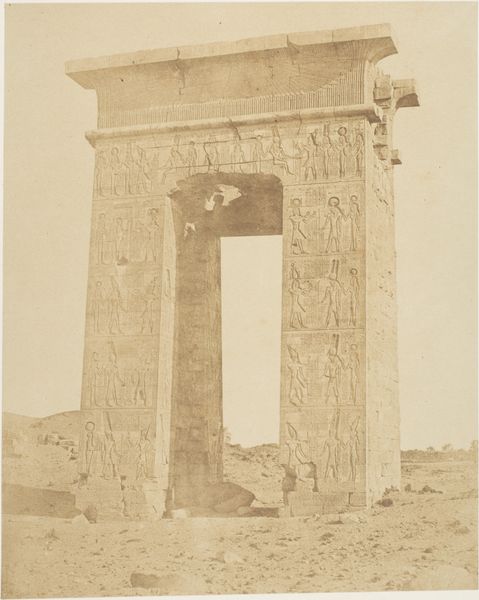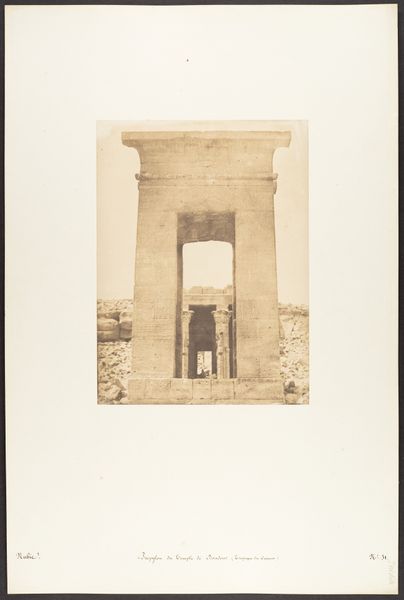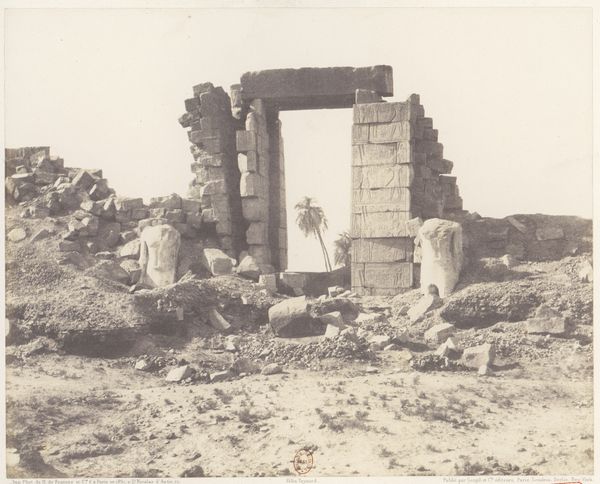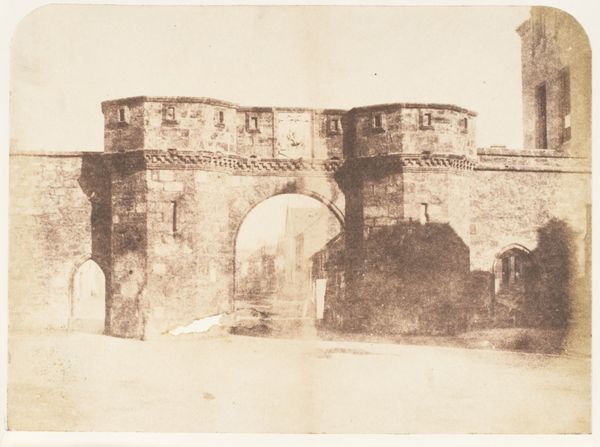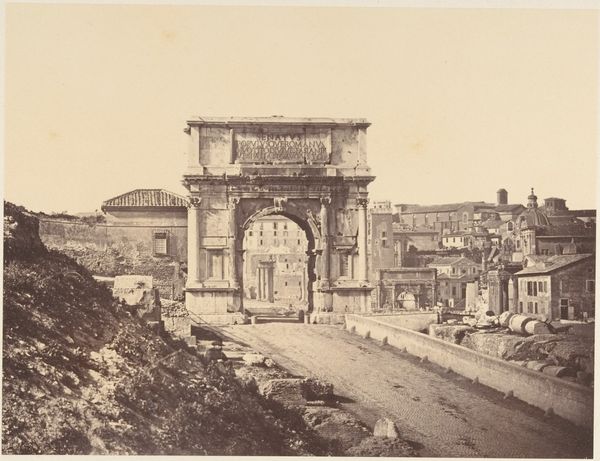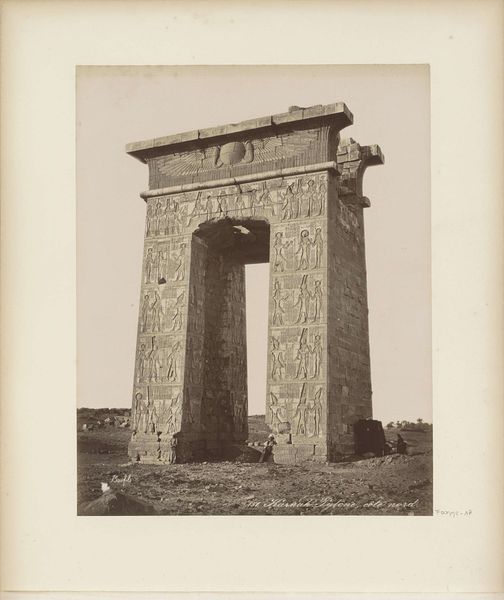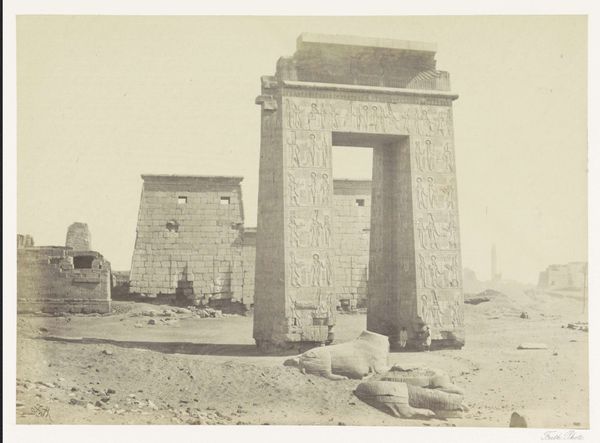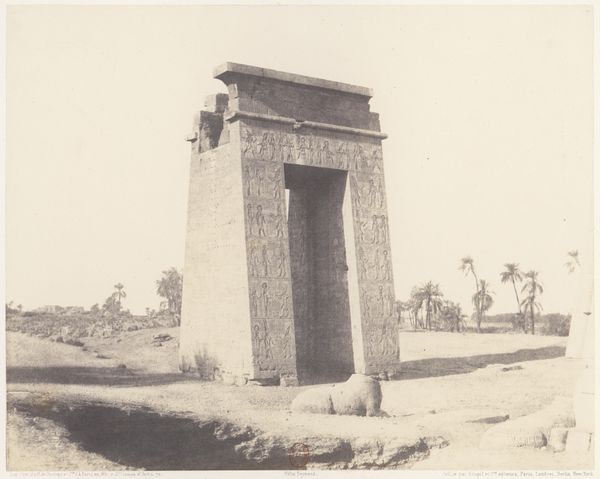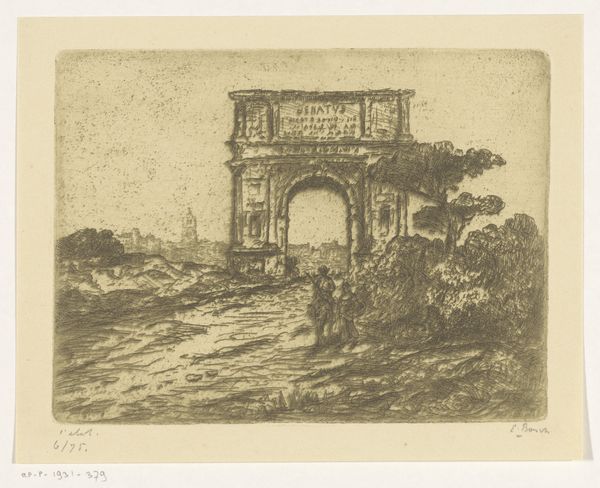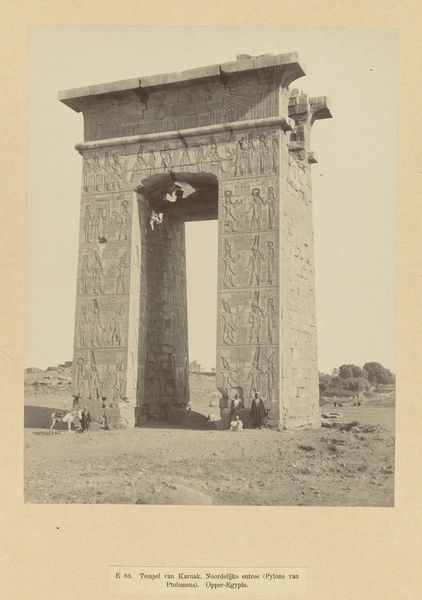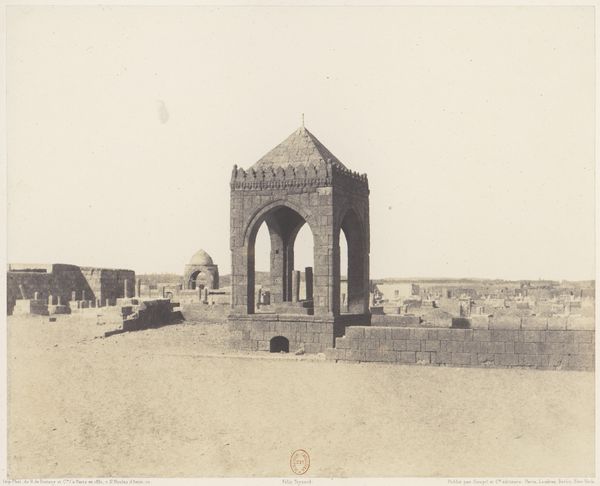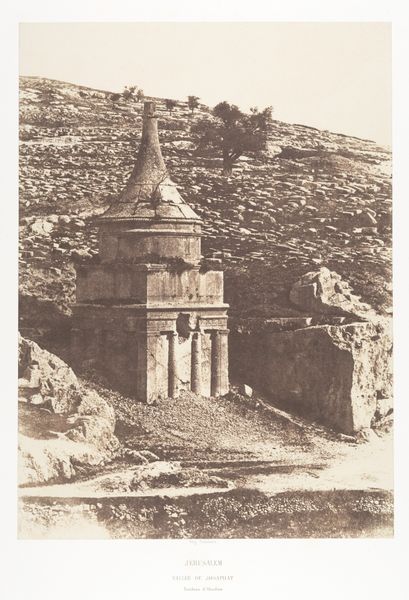
Karnak (Thèbes), Grande Porte du Nord Vue du Point X 1851 - 1852
0:00
0:00
photography, architecture
#
excavation photography
#
outdoor environmental image
#
photo restoration
#
landscape
#
ancient-egyptian-art
#
outdoor photograph
#
outdoor photo
#
outdoor photography
#
photography
#
outdoor scenery
#
ancient-mediterranean
#
arch
#
outdoor activity
#
scenic spot
#
architecture
#
shadow overcast
Dimensions: 23.7 x 30.6 cm. (9 5/16 x 12 1/16 in.)
Copyright: Public Domain
Curator: Welcome. We are standing before Félix Teynard’s photograph, “Karnak (Thèbes), Grande Porte du Nord Vue du Point X,” taken between 1851 and 1852. Editor: My first impression is one of stark solemnity. The scale seems both monumental and dwarfed by the emptiness around it. There’s a palpable weight in that stone arch. Curator: Precisely. Note the stark, almost geometrical composition. Teynard uses the gate as a framing device, drawing our eye through its precise lines and the incised hieroglyphs. The limited tonal range emphasizes the structure’s texture and its relationship to the landscape. Editor: It’s impossible to ignore the historical context, isn't it? Egyptomania gripped Europe in the 19th century, fueled by colonial ambitions. This image participates in that discourse. What narrative of power, of discovery, is Teynard complicit in advancing here? Curator: Undoubtedly, the photograph plays a role in constructing an image of Egypt for a European audience, but observe how Teynard’s technical mastery transcends mere documentation. The strategic use of light and shadow sculpts the form, and its texture. It isolates it almost as a symbolic form—a testament to the enduring architectural principles in the face of ruin. Editor: Enduring, but also exploited, objectified. These images circulated widely, reinforcing Europe's fascination with a “vanished” civilization available for appropriation. Consider also how the photograph itself, a relatively new medium, mirrors those claims of scientific objectivity even as it inevitably shapes our perception. Curator: Indeed, that interplay between perceived objectivity and subjective framing shapes its reception. One can analyze this photographic act in relationship to similar practices that served to re-interpret the architectural remnants according to European aesthetic principles and expectations of order and stability. Editor: So it’s more than just aesthetic documentation; it's enmeshed in networks of colonial power, shaping and perpetuating cultural biases. This is more than observing the ruins. It involves participating in ongoing acts of interpretation, misinterpretation, and re-contextualization. Curator: Ultimately, this tension between aesthetic form and historical baggage is part of the work's complex and engaging appeal. Teynard’s capture freezes a singular moment, forever shaped by these overlapping perceptions. Editor: Right. This isn’t a neutral recording of a ruin. It’s an active intervention in a discourse on power, history, and representation—offering multiple perspectives to confront.
Comments
No comments
Be the first to comment and join the conversation on the ultimate creative platform.


